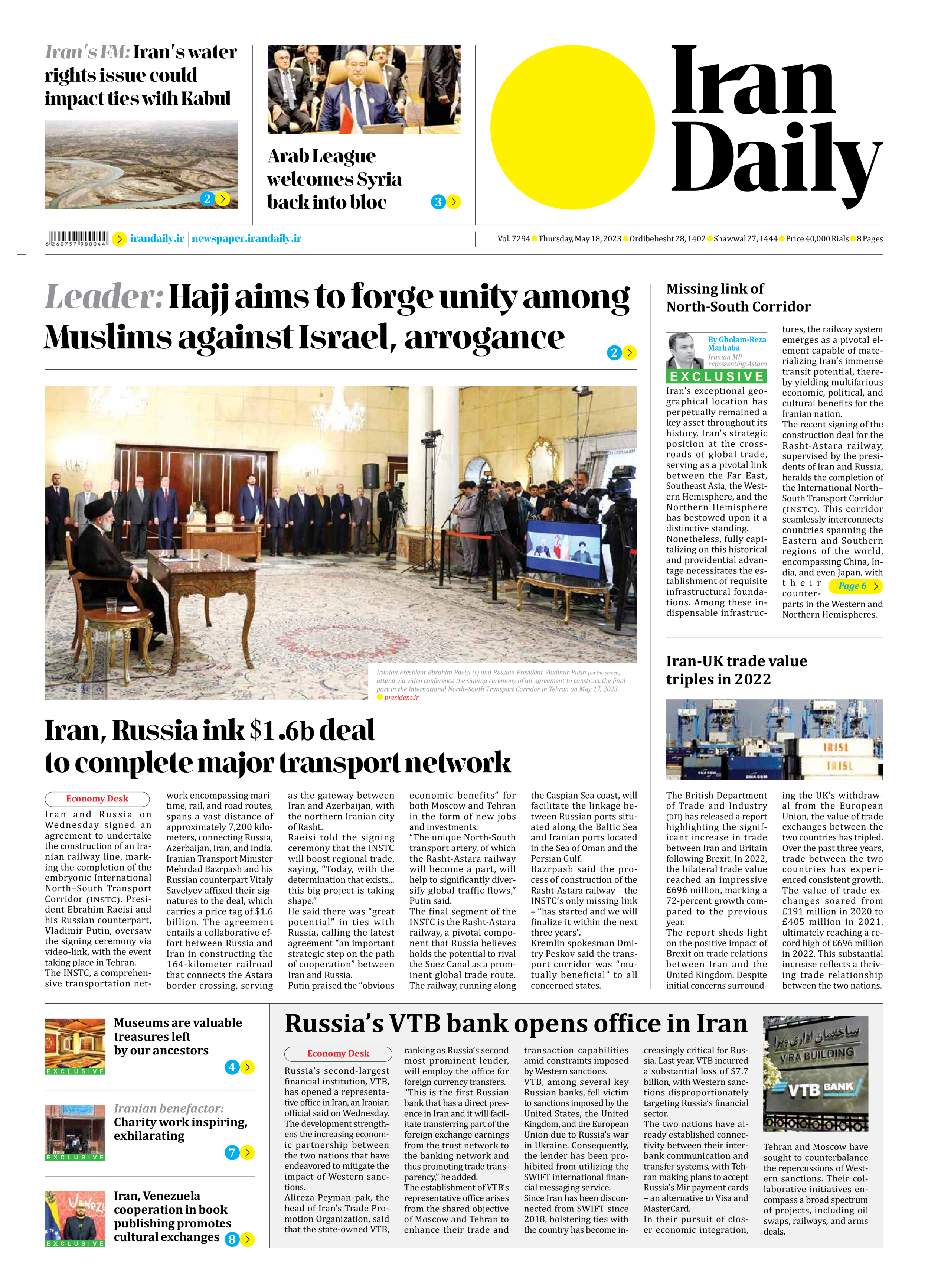
Missing link of North-South Corridor
By Gholam-Reza Marhaba
Iranian MP representing Astara
Iran’s exceptional geographical location has perpetually remained a key asset throughout its history. Iran’s strategic position at the crossroads of global trade, serving as a pivotal link between the Far East, Southeast Asia, the Western Hemisphere, and the Northern Hemisphere has bestowed upon it a distinctive standing.
Nonetheless, fully capitalizing on this historical and providential advantage necessitates the establishment of requisite infrastructural foundations. Among these indispensable infrastructures, the railway system emerges as a pivotal element capable of materializing Iran’s immense transit potential, thereby yielding multifarious economic, political, and cultural benefits for the Iranian nation.
The recent signing of the construction deal for the Rasht-Astara railway, supervised by the presidents of Iran and Russia, heralds the completion of the International North–South Transport Corridor (INSTC). This corridor seamlessly interconnects countries spanning the Eastern and Southern regions of the world, encompassing China, India, and even Japan, with their counterparts in the Western and Northern Hemispheres.
Thus far, notable transit routes such as Bandar Abbas-Tehran, Chabahar-Tehran, Incheh Borun-Dogharun, and Qazvin-Rasht railways have been successfully operationalized in Iran to facilitate the functioning of the INSTC. However, the construction of the 164-kilometer stretch of the Rasht-Astara railway encountered delays due to the lengthy route and insufficient funds.
Preceding President Raeisi’s visit to Russia, discussions arose during the meetings of expert delegations in Moscow, a gathering which I had the privilege of attending, where the Russians announced intentions to earmark a credit line for transportation projects in Iran. Within the meetings held between the two delegations, the Iranian representatives effectively convinced their Russian counterparts to incorporate the construction of the Rasht-Astara railway within this designated credit line.
Subsequently, when President Raeisi embarked on his journey to Moscow, this proposal found its place on the agenda and received Moscow’s endorsement during the bilateral talks between the two countries’ leaders. Following this, Russian expert delegations made multiple visits to Iran, inspecting the Rasht-Astara railway region, culminating in the signing of the crucial and strategic railway construction contract.
Essentially, this railroad represents the missing link within the INSTC, allowing countries across East and Southeast Asia, as well as the Arab states of the Persian Gulf, to make use of it and thereby generating substantial revenues for Iran.
Moreover, the operation of this railway will enable Iranian exporters and traders to reach their target markets with reduced costs, heightened security, and increased efficiency.
Presently, my hope rests upon the strong determination shared between the Iranian and Russian governments to foster cooperation, urging the swift implementation of the Rasht-Astara railway construction plan. The realization of this endeavor will not only augment regional countries’ focus and reliance on this transit corridor but will also yield significant economic benefits for Iran.







